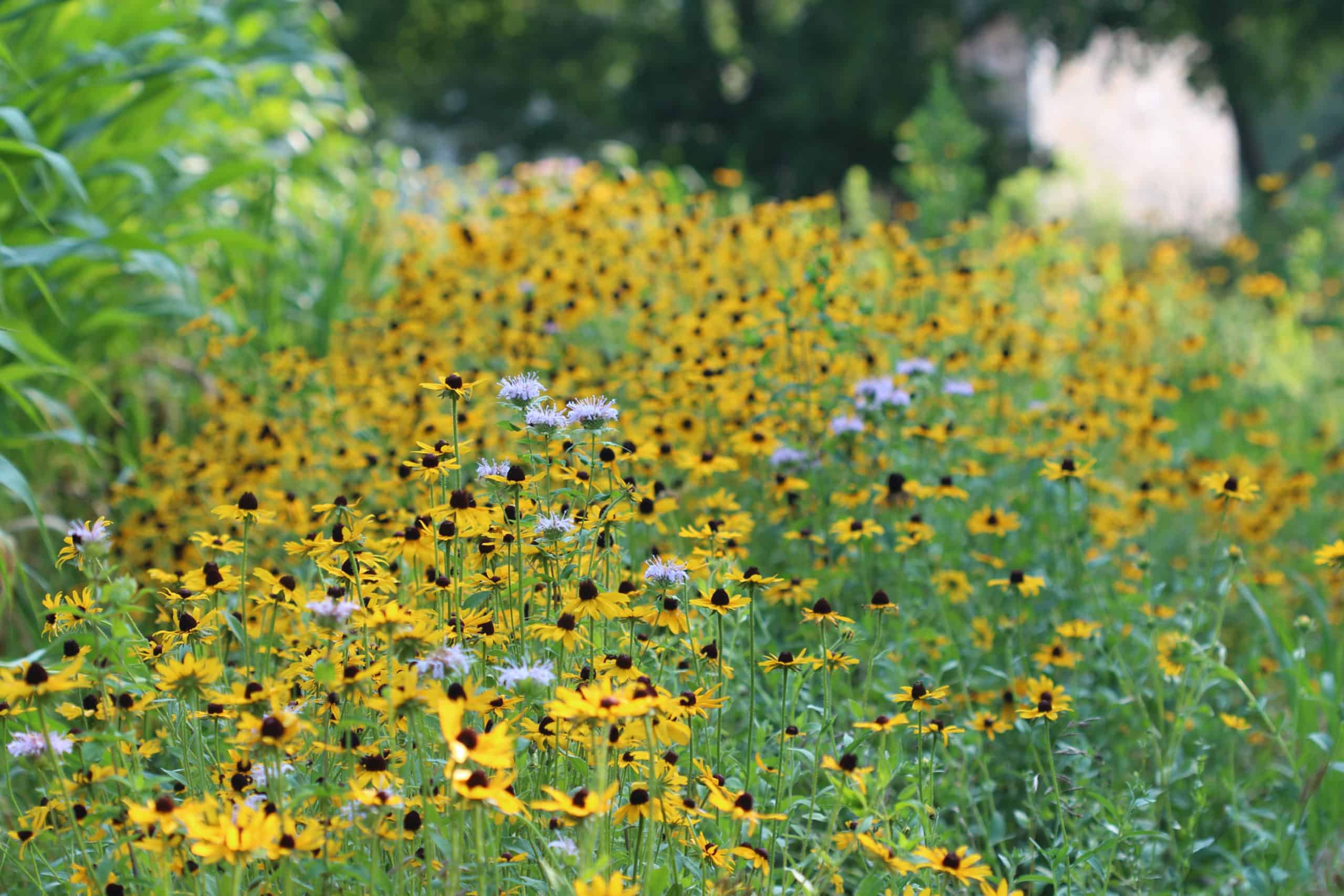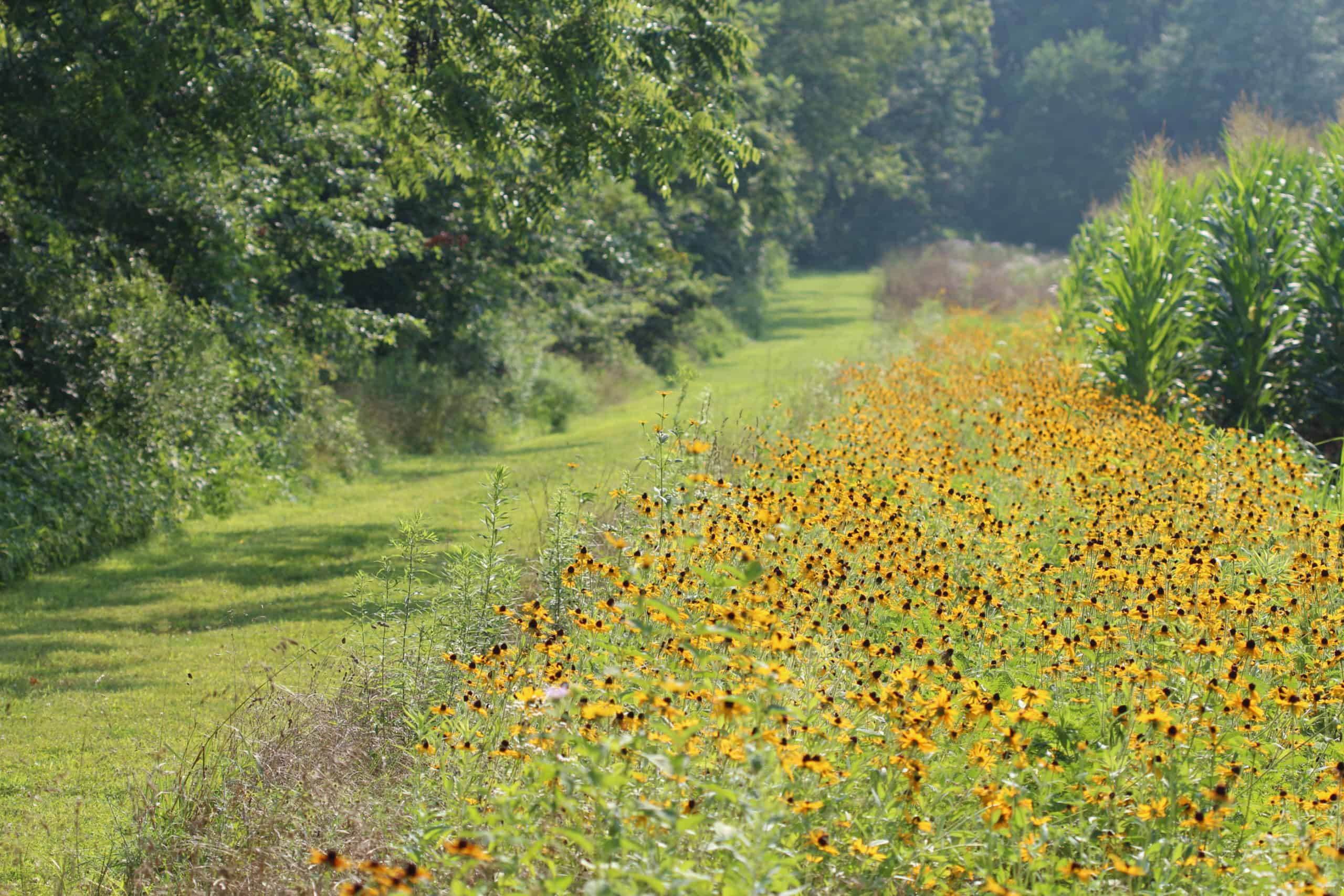Crow’s Nest: Crop field buffers blooming
By Daniel Barringer, Preserve Manager.

Last year we planted buffer strips of native wildflowers around some of the farm fields. Our farmer paid for the seed and I borrowed our shared Natural Lands no-till seeder that has been modified for wildflower and warm-season grass seed. As is usually the case, seeded wildflowers take some time to become established and it really wasn’t clear in its first season how much of the seed germinated. Now in its second year, we’re pleased to say that five species of the mix are well represented. Clearly the black-eyed Susans (Rudbeckia sp.) dominate. But there are also ox-eye sunflowers (Heliopsis helianthoides) and wild bergamot (Monarda fistulosa) blooming now. And wild senna (Senna hebecarpa) and partridge pea (Chamaecrista fasciculata) are abundant but not yet blooming. There are a few other species that were in the mix that we’re still waiting to see.

While these are beautiful, aesthetics was not the primary reason for establishing them. The first priority for the farmer was to give deer something to eat which was not his crop. The buffers also help separate visitors from the crop fields, reduce soil erosion, and create pollinator habitat. But these reasons also explain why these plantings are not front and center in the places visitors are most likely to see them. We didn’t plant them at the ends of crop strips where the tractor turns around to start a new row—wildflowers would be crushed there. You can see one strip on the back side of a corn field near the Chief’s Grove, and a couple more around the sides of the crop fields across from the barn with the silo (401 Piersol Road). The mowed grass edge is the trail next to the wildflowers; this trail is a simple loop that brings you right back where you started but offers this great view.
